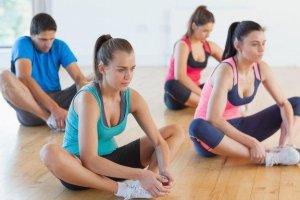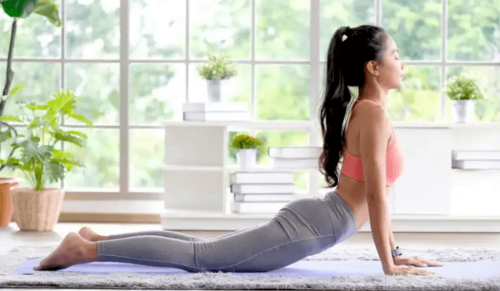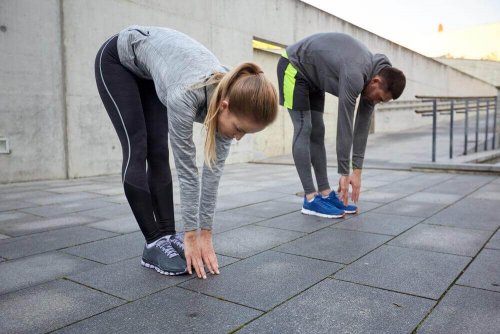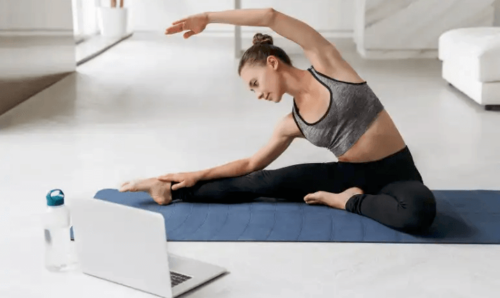5 Stretching Exercises to Improve Leg Flexibility


Reviewed and approved by Doctor Carlos Fabián Avila
Unlike endurance and strength, leg flexibility begins to decline in early life. This, of course, has consequences for muscles and joints. But, don’t worry, here are some simple exercises that’ll allow you to increase it.
Physical training not only helps you look good but also keeps your legs healthy. Putting your body in motion comes with many health benefits such as aging well.
What’s flexibility and what are its advantages?
Flexibility is the lengthening and adapting of the body’s muscles to different degrees of joint movement. Each body has its limits and particular skills.

Flexibility is a quality you can develop, not something that will miraculously fall into your lap while you’re watching TV. It takes hard work to develop it!
The importance of this ability lies in the fact that it allows you to move in a functional way and thus, be able to perform the tasks you want or need. The problem is that a person loses between 20 and 30 percent of their flexibility after the age of 30. At least according to a study published by the National Strength & Conditioning Association.
Flexibility is also key for the athletic population. According to a study published by BMJ, stretching before and after training helps reduce the risk of injury and prevents post-exercise muscle soreness.
However, as a Mayo Clinic publication points out, stretching should not be considered a warm-up per se, as you could injure yourself if you stretch a cold muscle. The article recommends following these guidelines:
- Take a 5- to 10-minute walk, jog or bike ride before stretching as part of a warm-up prior to training or competition.
- Focus on the major muscle groups and those you’re going to push the hardest.
- Make smooth movements without bouncing.
- Keep your breathing smooth and don’t overstretch the muscle; stretching shouldn’t hurt.
Take a look at 5 Treatments With Coconut Oil to Reduce Stretch Marks and Scars
Stretching exercises to improve leg flexibility
Below, we’ll share five easy and effective stretching exercises to improve leg flexibility.
1. Touch your feet without bending your knees

- Take a deep breath. Stand up straight and join your heels. If you prefer, you can have them slightly apart. Go for whatever is more comfortable for you.
- Then, contract your abdomen. Inhale through your nose and stretch your arms vertically toward the sky. Then, arch your back carefully.
- Straighten your back again and exhale through your nose as you bend forward. Try to touch your feet with your hands while you keep your knees straight. If you can’t do it, don’t worry. You’ll eventually improve your flexibility.
- Hold the pose for at least 30 seconds while you work on your breathing. Inhale again and return to the starting position. Repeat the exercise 20 times.
2. Butterfly stretch exercise for leg flexibility
- Sit on the floor, preferably on a yoga mat or towel.
- Join the soles of your feet in front of you and use both hands to hold them together, as in the main picture here.
- Seesaw your knees gently like the flapping wings of a butterfly.
- Sit upright and keep your hands on your feet to keep them together.
- Seesaw your knees for five seconds while you breathe.
If you feel comfortable, tilt your head down every time you lower your knees. Try to get your forehead as close as possible to your feet. Repeat at least four more times.
3. Stretch your legs while sitting on the floor

- This exercise is also done on the floor.
- The first thing you have to do is open your legs to the sides as much you can and leave them stretched out.
- Inhale with your torso upright and bring your arms skyward.
- Then, exhale while you bend your torso toward one of your legs. Stretch as if you were trying to touch your foot.
- Take a deep breath and go back to the starting position.
- Now, repeat with the other leg.
4. Scissors stretch
- This is done lying on your back on a mat.
- Lift your right leg, without bending your knee.
- Place your hands behind your calf (or thigh, if you can reach it).
- Bring your leg as close to your chest as possible, without taking your back off the mat.
- The other leg should also remain on the floor.
- Breathe and count to three,
- Change legs and repeat five to ten times for each leg.
- The idea is to stretch until you can open completely, like a scissors.
5. Fence stretch
This exercise is similar to the previous one, with the difference that it is done standing, leaning on a fence or low wall (about 4 feet).
- One leg remains on the ground, while the other is raised.
- The foot, or more precisely the heel, rests on the fence.
- Neither of the two knees should bend, neither the one of the leg that;s raised nor the one that’s on the ground.
- Lean the body a little forward, bringing the chest close to the raised knee.
- The hands should reach the feet, or heels.
- Count to five and switch legs.
- At first, it’s a little hard; if you find it difficult, use a lower support (about three feet), but don’t bend your knee.
Surely you’ll improve as you repeat it.
Be consistent to gain leg flexibility
The body adapts to any stimuli little by little. Thus, don’t expect for your flexibility to improve overnight. The point is to preserve it in order to maintain functionality and mobility over time.
As you can see, these stretching exercises are simple and inspired by different yoga poses. These exercises, in addition to improving leg flexibility, are also relaxing.
All cited sources were thoroughly reviewed by our team to ensure their quality, reliability, currency, and validity. The bibliography of this article was considered reliable and of academic or scientific accuracy.
- Arceo Fitness. (31 de enero de 2023). Aprende el split rápido con este ejercicio. Youtube. https://www.youtube.com/shorts/JNiQIcY1PpU?feature=share
- Arceo Fitness. (17 de mayo de 2021). Mejora tu flexibilidad (toca el piso con tus manos). Youtube. https://youtu.be/8vz-ACM8zKQ
- Clínica CEMTRO. (26 de marzo de 2020). Ejercicio de pilates: gato vaca. Youtube. https://youtu.be/xj6AtZa9UXE
- Clínicas de espalda Athlon. (27 de septiembre de 2022). Estiramiento dorso lumbar con torsión. Youtube. https://youtu.be/kfmHGHrD3pE
- Freletics. (2 de octubre de 2020). Warmup roll Tutorial Tuesday. Youtube. https://youtu.be/shKI_o_wi1w
- Fremap. (21 de mayo de 2020). Fisioterapia en casa: estiramiento de cuádriceps. Youtube. https://youtu.be/w2n_Hf-q76w
- Ictiva. (6 de febrero de 2017). Pilates. Las tijeras. Youtube. https://youtu.be/tHa0rHsRIH4
- Mora, R. Z., & Medina, E. C. (2015). Ejercicio como intervención en el tratamiento del dolor lumbar crónico. Investigación en Discapacidad, 4(1), 16-21. https://www.researchgate.net/profile/Eva-Cruz-Medina/publication/281592007_Ejercicio_como_intervencion_en_el_tratamiento_del_dolor_lumbar_cronico/links/55ef2c0408ae199d47c000bd/Ejercicio-como-intervencion-en-el-tratamiento-del-dolor-lumbar-cronico.pdf
- Northwest Paterna. (22 de julio de 2020). Estiramiento de cuádriceps sentado en el piso. Youtube. https://youtu.be/8_JJ8c2RLN8
- Proet. (23 de diciembre de 2022). 1128 Puente sobre pelota de pilates. Youtube. https://youtu.be/wZSr5BkvXkg
- Sweat4Success. (3 de abril de 2018). 90-90 Movilidad de caderas desde sentado. Youtube. https://youtu.be/OgqJOelmnY0
- Vivir Bien. (22 de mayo de 2024). Estiramiento de piernas en valla o banco. Youtube. https://youtu.be/WU6dxgkcEx0
- Xuan Lan Yoga. (20 de septiembre de 2023). Utthan Pristhasana. Youtube. https://www.youtube.com/shorts/hCZ-wvqkUAg?feature=share
- Yogaes. (25 de abril de 2018). Postura del zapatero o mariposa – Baddha Konasana. Youtube. https://youtu.be/kfMvTtByPlQ
This text is provided for informational purposes only and does not replace consultation with a professional. If in doubt, consult your specialist.








